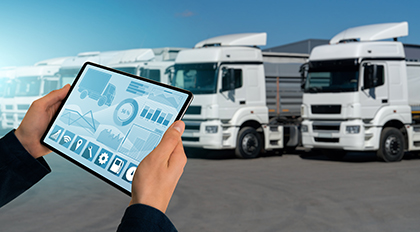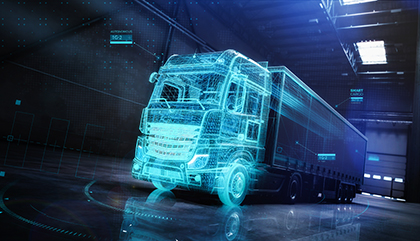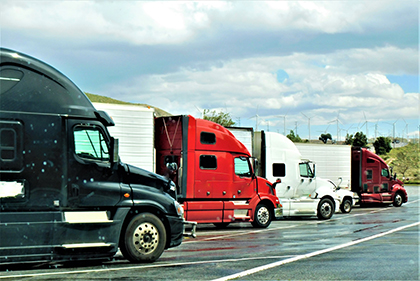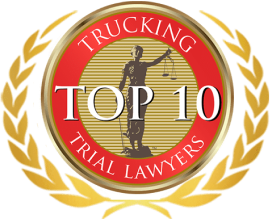Table of Contents
The trucking sector stands as one of the world’s oldest and most vital industries. Across the United States, it plays a pivotal role in transporting goods, contributing significantly to the country’s economy. However, recent years have presented challenges for the trucking industry. Factors such as surging fuel costs, a shortage of drivers, and the imposition of stricter regulations have posed profitability hurdles for the business.
Trucking companies are increasingly embracing new technologies to enhance cost-efficiency and overall operations. For instance, implementing GPS tracking systems enables dispatchers to optimize route planning for drivers, minimizing both time and fuel consumption. Additionally, innovative software applications are streamlining maintenance scheduling and facilitating compliance with safety regulations. With the integration of these and other cutting-edge technologies into the trucking industry, a resurgence in its fortunes appears likely.
On the other side of the spectrum, the technological advancement that keeps the industry evolving, in turn, heightens the risk of traffic incidents involving trucks and other commercial vehicles. That is where an experienced law firm comes into play. Managed by Arash Khorsandi, Esq., Arash Law helps individuals dealing with accidents involving trucking companies. With expertise in accident law and personal injury, our firm is well-prepared to help accident victims navigate the legal system, made more intricate by these cutting-edge technologies.
The importance of contacting our law firm cannot be overstated. In a world where technological advancements outpace legal regulations, protecting your rights and interests is paramount. Don’t wait until you’re facing legal complexities. Reach out to Arash Law today by contacting us at (888) 488-1391 for a complimentary consultation to understand how we can assist you in navigating this dynamic and transformative landscape.
Trucking Data Analytics

Data is gathered from different sources to perform the analyses, such as vehicles, fleet management software, maintenance, financial management, and other areas, therefore helping improve the system.
In addition, the Internet of Things (IoT) devices and the 5G Network Infrastructure will enable more energy-efficient and cost-effective systems. In the transportation industry, the 5G network infrastructure will provide end-to-end connectivity across various communication methods. This is what the future of the trucking industry looks like.
Why The Trucking Industry Is Evolving – The Challenges The Industry Faces
The advancement of technology and the ensuing challenges are spreading innovation across the globe. Some governments may find themselves satisfied with these innovations for wanting to solve problems related to climate, wealth, and overcrowding. These challenges are forcing the trucking industry to change as well.
The following are some of the many challenges the trucking industry faces that will impact its future.
Greenhouse Gases
The trucking industry is closely paying attention to climate change and the role it plays in the changing global environment. The engineers are making sure to emphasize more on green solutions that limit carbon dioxide emissions and make use of renewable energy resources.
Preventing Accidents
Truck crashes have killed countless motorists and pedestrians, and the new technology of telematics is working towards making our highways and roads a safer place for the vehicles and drivers using them.
Congestion on Roads
In many cities, infrastructure maintenance faces significant challenges and strains primarily due to the excessive use of trucks. Technologies, such as route mapping and route optimization, are trying to curb the traffic congestion these large vehicles contribute to by helping to find alternative routes.
More Security
The advancement in technology also attracts greater security risks. New technologies must be protected from hackers, for instance, which pose a more significant technological threat than ever before.
Faster Delivery Times
Due to traffic congestion, advancements in transportation technology are focused on accelerating travel speeds and making commuting faster and more efficient. The accumulated time we spend commuting is equivalent to years we could be doing something more productive.
These are some challenges we are facing head-on, and as the future of the trucking industry evolves, so does its potential to transform the world for the better.
The Impact of Technology on The Trucking Industry

Self-Driving Trucks
The idea of fully autonomous vehicles has long seemed like science fiction – a technology that may or may not ever become a reality. However, recent advances are making it more likely that trucks will one day be able to regulate their own routing within the country.
Automatic Safety Systems Paving The Way
In recent years, advancements in automatic safety systems have paved the way for self-driving trucks. These systems, which are now commonly found in many consumer vehicles, serve as the foundation for autonomous vehicle technology. For instance, lane-assist technology uses sensors to warn drivers when they veer across lane boundaries, with some systems even taking corrective action to keep the vehicle in its lane. Another example is the forward collision warning, a feature found in several Volvo trucks, which alerts truck drivers of potential collisions and can trigger emergency braking if a driver fails to respond promptly.
Platooning
In platooning, a formation of trucks drives in a line, with the first truck operated by a human driver and subsequent trucks guided by technology. This strategy offers efficiency gains and fuel savings due to reduced wind resistance. The European Union is funding a study called “Ensemble” to explore the potential benefits of platooning for freight transport across Europe. Additionally, various companies are actively piloting self-driving truck technologies, advancing the future of autonomous freight transportation.
Small Steps Toward A Big Future
While some remain skeptical about the future of fully autonomous vehicles due to safety concerns, many are innovatively addressing these challenges. For instance, Uber’s Advanced Technologies Group, now part of Aurora Innovation, originally envisioned autonomous trucks managing highway stretches while depending on human drivers for densely populated areas.
Aurora has already initiated a pilot program in Texas, employing self-driving trucks equipped with two vehicle safety operators. They are transporting freight for Barcel, the Takis spicy tortilla chips manufacturer, across locations in Dallas, Palmer, and Houston. The company intends to launch a fully autonomous trucking business by the end of 2023.
Similarly, Kodiak Robotics and Waymo are conducting their own projects, focusing on Level 4 autonomy rather than full Level 5 automation. Under Level 4, the vehicle operates autonomously in specific conditions, such as on open highways, while human intervention is needed in more complex situations like busy city streets. This approach allows drivers to take control when necessary.
In essence, self-driving trucks are closer to reality than many realize, and Level 4 autonomous freight deliveries are poised to become increasingly commonplace.
The Internet of Things – IoT Technology
There is no doubt that the Internet of Things (IoT) devices have a lot to offer to the transport industry. They offer the ability to transmit all kinds of data that can be used to optimize and manage supply chains, especially in the case of over-the-road freights.
Precise Location Tracking
Where is my freight exactly, and when will it arrive? This is a common problem at the most basic level in the logistics industry that can be solved by IoT devices. In order to reduce late deliveries to customers, more accurate location updates can be provided, and trucks can be rerouted as needed.
Freight Status
Using IoT devices in the workplace can also provide reassurance to customers that their freight is handled correctly along the way. Such devices can be used to measure factors like temperature and humidity, which can be relevant to customers who ship agricultural or high-end alcohol, for instance.
Available Cargo Space
Trucking companies also use cargo sensors to determine trailer space availability in real time. The data from these sensors is used to expedite cargo movement and reduce the amount of driving hours through which a truck performs its deliveries.
Preventative Maintenance
Many companies are installing IoT devices on their trucks to detect the need for maintenance and prevent breakdowns. Volvo, in particular, has been at the forefront of this field with its Remote Diagnostics system for years now. They use sensors on their trucks to transmit metrics about the performance of their engines to their Uptime network. In case of problems, the Volvo Uptime Center in Greensboro, NC, will notify drivers so that options for addressing those problems will be discussed. As a result of the program, the average repair time has been reduced by 24%, and the average diagnostic time has been reduced by 71%.
As a result of this IoT technology, large amounts of data are generated, and even more, tools are available now that can help shippers, carriers, and supply chain managers figure out what to do with all their data.
Big Data & AI Technology
The transportation and logistics industry is increasingly interested in analytics and data-driven decision-making. IoT devices provide a wealth of data, making it apparent that collecting, parsing, and analyzing this information could greatly benefit the trucking sector. However, the challenge lies in effectively presenting and interpreting the vast amount of data when making informed decisions.
Consequently, some companies are turning to AI-driven analytics programs to process the data and make predictions based on historical metrics. Only a small portion, estimated at 12%, of the logistics industry is utilizing AI technology. Nonetheless, predictions indicate a rapid increase, with an expected adoption rate of 60% by 2025.
Route Optimization
In order to produce an accurate route prediction, AI-driven dashboards may consider several critical factors, including trailer capacity, traffic data, warehouse lead time, and more. They can then construct a series of routes with an estimated arrival time based on those various factors.
Procurement and Fulfillment
By analyzing past data, AI technology can assist in demand planning. For example, AI-based software can anticipate product and supply needs, analyze current stock levels, and schedule deliveries accordingly. It can also recommend rerouting routes based on fluctuations in demand or traffic patterns.
AI can offer predictions and recommendations based on massive datasets that are too complex for a human brain to process. This will lead to new efficiencies and have a significant effect on the way freight travels.
Challenges and Opportunities in Adopting Technology in The Freight Industry

Another challenge lies in the resistance to change. The freight industry has traditionally relied on manual processes and conventional transportation methods. Introducing new technologies necessitates a cultural shift and a change in mindset. Some employees may resist these changes, concerned that technology might replace their jobs or disrupt established workflows. Consequently, businesses must invest in training and change management initiatives to facilitate a smooth transition.
Notwithstanding these challenges, there are abundant opportunities for businesses to embrace technological advancements in the freight industry. By harnessing innovative solutions, enterprises can attain a competitive advantage, enhance operational efficiency, and elevate customer satisfaction. Furthermore, technology can empower businesses to access new markets and broaden their reach. For instance, by offering real-time tracking and personalized services, companies can attract fresh customers and foster enduring relationships.
Seven Latest Technologies Changing The Trucking Industry
Automation, big data, and the Internet of Things (IoT) have seamlessly integrated into the trucking sector, becoming vital for companies aiming to maintain competitiveness and profitability in today’s ever-changing market. These technological strides have streamlined cargo tracking, fleet management, and communication, thereby elevating customer satisfaction. Moreover, they are pivotal in curbing carbon emissions and promoting eco-friendliness within the trucking industry. Let’s delve into the essential technologies influencing the industry’s future.
Driver Safety Monitoring
Several trucking companies invest in cutting-edge technology to acknowledge the importance of driver safety by improving the standards. Safety measures include collision mitigation systems, which incorporate sensors to monitor various types of crashes and take emergency action.
The use of driver safety technologies such as blind spot monitoring, lane departure warning, and adaptive control is fundamental in reducing accidents and improving productivity. Autonomous braking and collision avoidance also help prevent errors by keeping drivers awake and alert. This intersection of safety and technology not only improves efficiency and cuts costs but also enhances customer satisfaction. Furthermore, using driver safety measures can lower insurance premiums and create an overall safer working environment for truck drivers.
E-Logging Devices
Trucking operations are recorded with e-logging, including service hours, mileage, and performance. Providing accurate and quick records of driver logs saves transportation companies time and effort. By securely storing and swiftly accessing electronic records, they can bid farewell to cumbersome paper documentation and the associated administrative tasks. The system also reduces fuel costs, increases maintenance-cycle efficiency, and improves compliance.
E-Payment Methods
Using e-payment methods has significantly simplified and streamlined payments. Truck companies now have the technology to transfer money, track taxes, and provide on-the-road financial assistance. This method not only reduces the labor and time spent collecting payments but also provides valuable insights.
Since electronic payments settle faster than traditional paper checks, trucking companies are now provided with expedited access to cash flow management. Data analysis and electronic recordkeeping capabilities also help them better anticipate expenses and optimize their accounting operations. Embracing e-payments eliminates the need for physical cash transactions and paper invoices, which minimizes fraud risk and enhances financial security.
Fleet Management Software
Trucking companies can use fleet management software to analyze metrics and gain more insight into their fleets. For instance, vehicle tracking systems record vehicle performance, miles driven, and maintenance metrics. Data such as this can be used to identify maintenance issues and train drivers. By monitoring driver performance and vehicle upkeep, fleet operators can improve overall operations.
Moreover, the software reduces risks and improves safety. In addition to predictive analytics, vehicle tracking, and driver behavior monitoring, environmental risks can be identified and controlled. The fleet can optimize routes and measure performance data from every vehicle management software, in turn helping to maximize efficiency and improve the overall operating costs of a fleet.
Dynamic Routing
Dynamic routing determines the best route for a fleet of commercial vehicles based on factors like cost, time, weight, distance, safety, and customer preference. It can quickly determine alternate routes when the driver cannot follow the initial route.
It enables networks with high traffic volumes to route traffic most efficiently, thereby speeding up the delivery process. As traffic and weather change rapidly, dynamic routing provides the optimal route to the destination in real-time. Lastly, it can also notify drivers of significant traffic changes.
Mobile Apps
Smartphone apps have transformed the trucking industry, improving operational efficiency. They aid in organization, on-time deliveries, and real-time driver information. These apps also simplify administrative tasks like payroll and billing, enhance driver-dispatcher communication, and provide driver amenities.
Furthermore, they offer customers easy tracking of orders and shipments, real-time updates, and performance monitoring of assigned drivers. This improves customer engagement and satisfaction.
Autonomous Trucks
Autonomous trucks are reshaping trucking. Truck companies are increasingly using self-driving tech, route optimization, and IoT sensors to boost efficiency, gather data, and satisfy customers. They cut the need for human drivers, improving productivity, safety, and costs. They also reduce fatigue, enhance safety, and save time and money.
Meanwhile, real-time navigation data improves fuel efficiency and cuts travel distances. These trucks ease driver shortages, speed up cargo transport, and reduce costs, becoming the industry norm by lowering expenses and benefiting trucking as a whole.
Will Trucking Rates in 2023 Increase or Decrease?
In 2023, truckload rates have been low. Undoubtedly, the downtrend that began in the 3rd quarter of 2022 continued. However, lower freight shipping costs may not last. There is economic data that does not support a continuing downtrend. In addition, 2023 is expected to bring volatility.
How Technology Is Changing The Trucking Industry
Technology is constantly pushing the boundaries and changing the way we live. Nowadays, we’re used to everything being online and at our fingertips. For example, it takes less than an hour to receive a package from Amazon, the pioneer of fast-paced delivery service.
Supply chain productivity has also improved with the advancing technology. Transportation, supply chain management, international transportation (ocean and air), and shipment tracking all benefitted from these advances. Logistics will change dramatically because of all the aforementioned major technological advances.
Arash Law – Your Legal Partner Experienced in Transportation Issues and Personal Injury
As we explore the fascinating evolution of the trucking industry in the face of advancing technology, it’s clear that embracing innovation is vital to staying ahead in this dynamic landscape. However, with technological advancement improving the services of trucking companies and overall road safety comes the potential for increased risks of traffic accidents. In these unfortunate instances, the need for a dedicated personal injury attorney becomes all the more crucial.
Arash Law, under the leadership of the esteemed Arash Khorsandi, Esq., has consistently delivered exceptional results, recovering over $750 Million in settlements for our valued clients who sustained injuries or lost a loved one in a traffic collision involving these huge commercial vehicles.
Our experienced team of attorneys possesses in-depth knowledge of a broad range of transportation issues in relation to personal injury laws. In negotiations with huge and often intimidating trucking companies, we are adept at presenting a robust case detailing your damages and the compensation necessary for your overall recovery.
For expert legal guidance and support in your personal injury case, or if you have questions about the legal aspects of the evolving trucking industry and how it affects your case, contact us at (888) 488-1391. Arash Law provides unwavering support and representation to help you secure favorable outcomes.








































